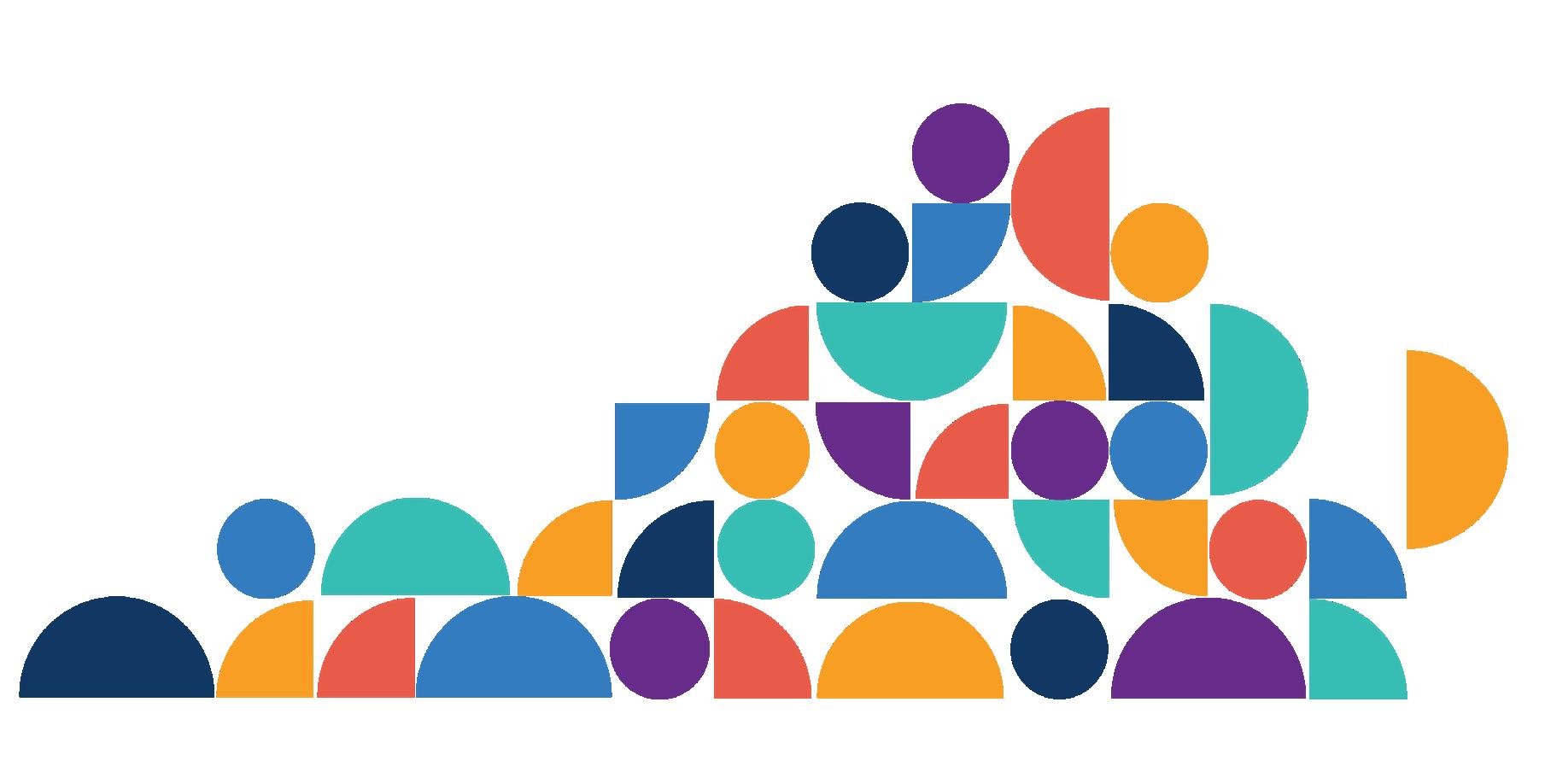STRATEGIC PLAN FOR INCLUSIVE EXCELLENCE


 Governor’s
Governor’s



 Governor’s
Governor’s
In collaboration with the Governor’s Office of Diversity, Equity, and Inclusion (ODEI), the Department of Human Resource Management (DHRM) is proud to support the ONE Virginia Plan focused on advancing inclusive excellence across state agencies.
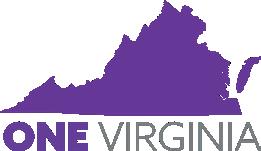
This plan outlines the priorities and goals of state government as we cultivate and promote a diverse, equitable, and inclusive culture where employees, stakeholders, and residents feel welcomed and empowered. DHRM recognizes that the goals outlined in the ONE Virginia Plan are ambitious; however, we are confident that if we all work together, we will get the job done.
Virginia’s state government must reflect the Commonwealth’s broader diversity. Diversity in the workforce provides a powerful and measurable dynamic by tapping into differing values and ways of thinking.
Diversity improves the effectiveness and productivity of the workforce because it fosters creative thinking and demands that we all “stretch” our minds as we develop a roadmap for the outcomes we aim to achieve. The state has recognized the power of diversity in building a workforce that reflects individuals from a range of cultures, religions, races, ethnicities, and valuable differences that are defined by gender, age, sexual orientation, ability, geographic location, origin, and education, among others.
The critical work of all state agencies is made possible by our ability to attract and retain a talented workforce that reflects the residents we serve. Therefore, on behalf of the DHRM team, we charge all agency leaders to adopt the ONE Virginia Plan and subsequent Principles of Community to create an engaged workforce that leverages diversity as a strength, cultivates and supports an inclusive work climate and culture, and works in pursuit of policies and practices that hold each agency accountable for expanded access, success, and overall inclusive excellence. We ask for the commitment of every state employee to embark on this mission of advancing our workforce toward increased engagement, unification, and innovation. It is only through our collective efforts that we will make the Commonwealth of Virginia a model of inclusive excellence, kindness, and respect.
Emily S. Elliott Director, Department of Human Resource ManagementAs the Commonwealth’s inaugural Chief Diversity Officer (CDO), it is my esteemed honor to present the ONE Virginia Plan.

What follows is a description of why this historic initiative is necessary, how the ONE Virginia Plan was created, who served on the executive steering committee to create the plan, and a description of the ONE Virginia Plan to advance diversity and inclusive excellence across the Commonwealth of Virginia.
Inequity is rooted in America’s foundation. Accordingly, Virginia‘s history is replete with unrelenting, pervasive structural racism starting with the extermination of its Indigenous community, the chattel enslavement of Africans, racialization of immigration, citizenship and religion, exclusion of individuals with disabilities, and progressing to government-sanctioned oppression of generations of Black Americans and other historically underrepresented populations. The framework of scientific racism was used to justify these egregious acts.
American institutions of racial domination have evolved from slavery and segregation to punitive, exploitative, and unjust systems of housing, education, labor markets, criminal justice, and more. White supremacy emerged early on to justify racism and racial violence. With the introduction of chattel slavery in 1619 in the Commonwealth of Virginia, the majority of the Black experience in America has been that of legalized slavery and Jim Crow laws, which systematically denied opportunities for an entire race and subjected generations of individuals, families, and communities to hardships and disadvantages in every area of life.
In the 400+ years since, a plethora of laws and policies have been established to create a caste-like racial hierarchy system that limited the rights and freedoms of Black and Indigenous people, and People of Color (BIPOC). Adjacent is a timeline of racist laws and policies that existed in the Commonwealth.
Such state-sanctioned, manufactured hierarchies or acts of violence (e.g., lynching, Massive Resistance, discriminatory lending practices of the 20th century known as “redlining,” intentional discrimination in state government, unfair policing, etc.) exist at the intersection of white supremacy and de facto hegemony, which continue to permeate Virginia and all of its systems today.
At one time, Virginia laws indicated that freed Blacks were not welcome in the Commonwealth and also threatened them with enslavement if they remained.
1619: The “first 20 and odd enslaved Africans” arrived at present-day Fort Monroe in Hampton, Virginia.
1691: The Virginia General Assembly made it illegal for any “white” man or woman to marry a “Negro or Indian” person.
1790: U.S. Congress enacted the Naturalization Act of 1790, restricting naturalization to “white persons,” and laying the foundation for racially defined immigration and citizenship policies restricting immigration from non-European nations.
1862: President Lincoln signed into law the Homestead Act granting Americans 160-acre plots of public land for the price of a small filing fee, and forcing Indigenous populations to be displaced from their ancestral lands onto reservations to make way for homesteaders.
1865: White lawmakers enacted a series of laws known as “black codes” to ensure that cheap Black labor would be accessible following the abolition of slavery. They criminalized vagrancy and transformed misdemeanors like petty theft into felonies.
1924: The Virginia General Assembly enacted the Racial Integrity Act. The act reinforced racial segregation by prohibiting interracial marriage and classifying as “white” a person “who has no trace whatsoever of any blood other than Caucasian.”
1934: The Federal Housing Administration and related programs made it possible for millions of average white Americans to own a home for the first time. The U.S. government established a national neighborhood appraisal system, explicitly tying mortgage eligibility to race, a policy known today as “redlining.”
1935: The Social Security Act specifically exempted two occupations from coverage: farmworkers and domestics, both largely non-white.
The repercussions of historical racism (including but not limited to continued discrimination against BIPOC, people with disabilities, women, the LGBTQ+ community, immigrant communities, and religious minorities) along with limited access to healthcare, healthy food, clean water and air; reduced life expectancy; increased rates of lead poisoning, and higher rates of infant mortality for BIPOC demonstrate the current impact of racism.
In 2007, the Commonwealth of Virginia formally apologized for its role in slavery. In 2019, Virginia acknowledged the 400th anniversary of the arrival of the first enslaved Africans to Old Pointe Comfort, now Ft. Monroe in Hampton, Virginia. Together, in 2020, Virginia policymakers and legislators championed a journey toward truth and racial reconciliation and a new, more culturally affirming Commonwealth by advancing unprecedented equity-focused laws, which gave localities authority over Confederate war memorials; removed discriminatory language from the Acts of Assembly; established Juneteenth as a paid state holiday; expanded access to the ballot box by allowing early voting without a stated “excuse”; eliminated Lee-Jackson Day in favor of making Election Day a paid state holiday; provided driving privileges for undocumented immigrants; enacted the Virginia Values Act—making Virginia the first state in the South to enact comprehensive protections for the LGBTQ+ community— created a commission to study the impact of slavery in Virginia; established the Office of New Americans (ONA); and signed into law a historic equity agenda, which included making the
Chief Diversity Officer position a permanent, cabinet-level position for every future Governor’s administration.
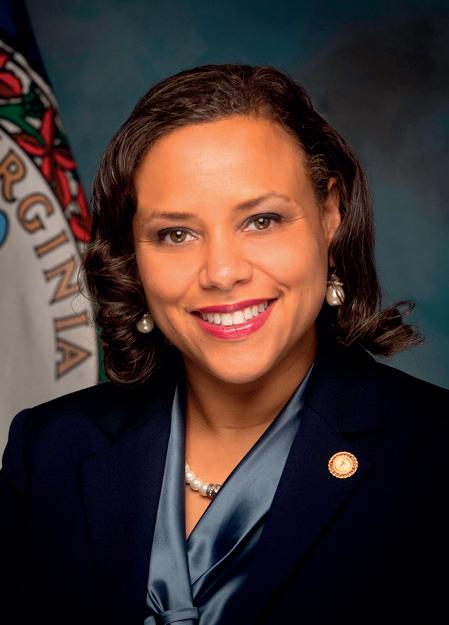
Specifically, House Bill 394 and the Code of Virginia indicate that the Director of DE&I, also referred to as the Chief Diversity Officer, shall:

(i) develop a sustainable framework to promote inclusive practices across state government;
(ii) implement a measurable, strategic plan to address systemic inequities in state government practices; and
(iii) facilitate methods to turn feedback and suggestions from state employees, external stakeholders, and community leaders into concrete equity policy.
The Honorable Dr. Janice Underwood, Ph.D. Chief Diversity Officer of the Commonwealth Office of the Governor
As a result of this authority and the historical antecedents that make this initiative necessary, the Governor’s Office of Diversity, Equity, and Inclusion (ODEI) has collaboratively created the ONE Virginia Plan as a guide for our statewide effort to prioritize increased diversity, the advancement of inclusive excellence, and a return on investment for these reforms across the Commonwealth of Virginia and its 100+ state-supported agencies. The ONE Virginia Plan is also intended to serve as a model for other public and private sector organizations that we encourage to voluntarily partner with us.
This plan was developed in collaboration with the Virginia Department of Human Resource Management (DHRM) which served on an interdisciplinary volunteer executive steering team that intentionally sought public input from stakeholders all around the state. Together, the steering team created an online toolkit for use by state agencies and other stakeholders across the state to collectively measure five broad goals that advance diversity and inclusive excellence.

The ONE Virginia Plan positions the state as a national leader in building a statewide strategy to advance DE&I through changes in our services, systems, and operations. The intent behind the ONE Virginia Plan is to use the Inclusive Excellence framework to disrupt longstanding injustice and inequity, and create sustainable change, innovation, and productivity across state government and other sectors of the Commonwealth. Inclusive excellence gives Virginia a business advantage and makes it a more attractive place to live, learn, work, and play.
The sample implementation plan (and other resources in the online toolkit) provides a roadmap for state agencies and other stakeholders to meet the shared goals of the ONE Virginia vision and mission.
Therefore, it is with great enthusiasm that I present the ONE Virginia Plan and its supplemental tools to help the Commonwealth of the Virginia and its state-supported agencies, as well as other public and private sector organizations, achieve visible progress in diversity, equity, and inclusive excellence.
The Honorable Dr. Janice Underwood, Ph.D. Chief Diversity Officer of the Commonwealth Office of the Governor
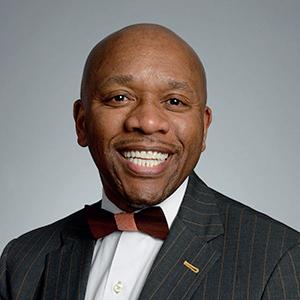
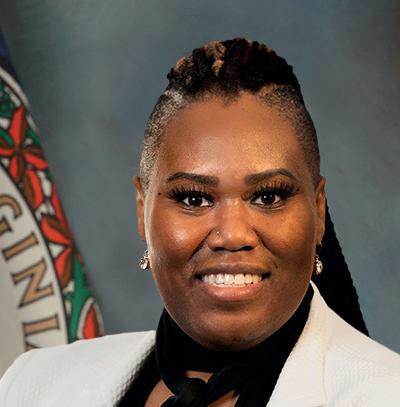
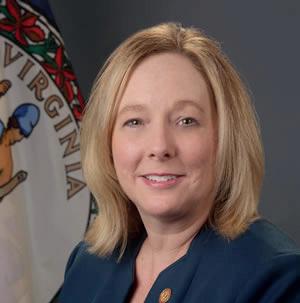

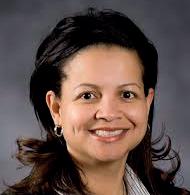
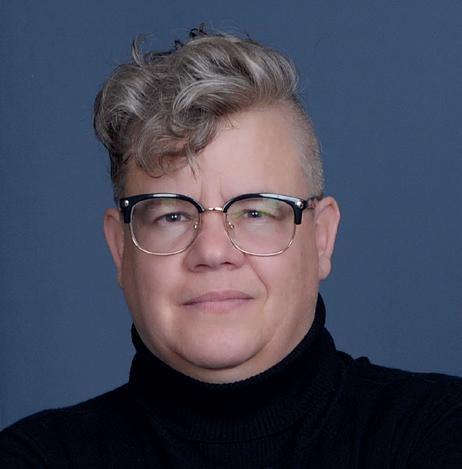
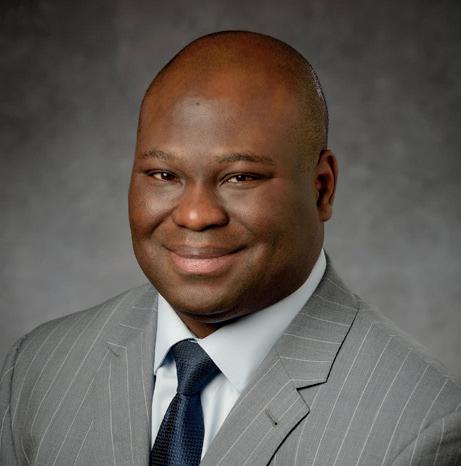


 The Honorable Janice Underwood Chief Diversity Officer of the Commonwealth, Office of the Governor (Chair)
Phyllis Randall Chair, Loudon County
Emily Elliott Director, Department of Human Resource Management
Karla Bruce Chief Equity Officer, Fairfax County
Dr. Tara Warne-Griggs External Assessment Consultant, TWiG Consulting
Alaysia Black Hackett Deputy Chief Diversity Officer, Office of the Governor
Dr. Kevin McDonald Vice President of DE&I, University of Virginia (Co-Chair)
Dr. Susan Gooden Dean, Douglas Wilder School of Government at Virginia Commonwealth University
Vilma Alejandro Department of Human Resource Management
Carlos Brown General Counsel and Chief Compliance Officer, Dominion Energy
The Honorable Janice Underwood Chief Diversity Officer of the Commonwealth, Office of the Governor (Chair)
Phyllis Randall Chair, Loudon County
Emily Elliott Director, Department of Human Resource Management
Karla Bruce Chief Equity Officer, Fairfax County
Dr. Tara Warne-Griggs External Assessment Consultant, TWiG Consulting
Alaysia Black Hackett Deputy Chief Diversity Officer, Office of the Governor
Dr. Kevin McDonald Vice President of DE&I, University of Virginia (Co-Chair)
Dr. Susan Gooden Dean, Douglas Wilder School of Government at Virginia Commonwealth University
Vilma Alejandro Department of Human Resource Management
Carlos Brown General Counsel and Chief Compliance Officer, Dominion Energy
The ONE Virginia Plan for diversity, equity, and inclusive excellence charges all state employees to join in changing the face of our workforce to better reflect the diverse population we serve. Transforming the culture of our state agencies and shifting them to premier organizations requires time, commitment, and the participation of each and every employee, intern, fellow, student page, and leader. Our people are our greatest strength, hence we must establish an inclusive environment that respects and values the perspective of all individuals. By doing this we empower our human resources to achieve their highest potential and to contribute to the ONE Virginia mission for inclusive excellence in state government.
This statewide ONE Virginia Plan outlines steps to uphold the Governor’s Executive Order One and its commitment to fostering a culture of inclusion, diversity, and mutual respect for all Virginians, as well as Executive Order FortySeven and its goal of expanding opportunities for Virginians with disabilities. This plan incorporates recommendations from stakeholders and thought
leaders with backgrounds and experience in the fields of equal employment opportunity (EEO), policy, and diversity, equity, and inclusion (DE&I).

The Governor’s Executive Order One directs all State appointing authorities and other management principles to take affirmative measures, as determined by the Director of the Department of Human Resource Management, to emphasize the recruitment of qualified minorities, women, individuals with disabilities, and older Virginians to serve at all levels of state government. Therefore, ONE Virginia provides a shared path and creates alignment with and accountability for the goals of Executive Order One, so that state agencies can approach workplace DE&I efforts in a coordinated manner.
ONE Virginia directs Appointed Executives, University/College Presidents, and Agency Leaders, Directors, and Managers to develop and implement DE&I action plans relevant to the focus of their Agency/Organization in accordance with the state government-wide goals and initiatives.

The ONE Virginia Plan Goals are stated below.
1. Recruit and retain a diverse workforce
2. Create and sustain an agency culture that affirms and respects diversity and employs inclusive practices throughout daily operations
3. Engage the workforce in learning the concepts of DE&I, and the importance of these concepts to achieving their agency mission
4. Create and sustain an organizational infrastructure to support accountability in achieving equity goals within the agency and the Commonwealth
5. Focus community engagement activities on those that provide measurable, direct, equitable, and sustained benefit to all of Virginia’s diverse communities
The Steps Toward Inclusive Excellence (IE) will help agencies to achieve the aforementioned goals:
Make an organizational commitment to Inclusive Excellence
Analyze current practices, policies, and data (see IE continuum)
Identify and prioritize root causes of systemic inequity and barriers to change
Develop strategies to eliminate or mitigate root causes and barriers
Redesign practices and policies to address opportunity gaps
Create new programs; eliminate/redesign harmful or ineffective programs
Monitor progress of DE&I efforts to ensure they remain integrated, intentional, and central to the core mission and functioning of an inclusive and equitable state government
The Online Toolkit is available on the ODEI website to facilitate each agency or organization‘s implementation of the ONE Virginia Plan In collaboration with ODEI and the Secretary of Administration, every leader is expected to fully leverage all of the online resources.
The contents of the Online Toolkit are listed below. The resources provided are adaptable and can be individualized for the needs of each agency or organization.
The ONE Virginia Plan (this document)

PowerPoint presentation(s) describing the ONE Virginia Plan and associated metrics
Principles of Community (adaptable)
for
It is important to have a shared vocabulary in the work of DE&I. Below is a short list of common terms and abbreviations used throughout this document, along with their meanings. A more comprehensive “Glossary of Terms” intended to advance education and awareness of institutional and structural racism and to assist in formulating appropriate language for any formal or informal conversations about race, racism, proposed executive action, or upcoming legislation is provided in the online toolkit.
Black, Indigenous, and People of Color
Commonwealth of Virginia

Diversity, Equity, and Inclusion
Department of Human Resource Management
Building diversity in our state agencies is only a starting point. Diversity is defined broadly as all of the characteristics that make individuals unique. It is used to describe the various combinations of group/ social differences (e.g., race/ethnicity, class, gender, gender identity, sexual orientation, country of origin, and ability, as well as cultural, political, religious and other affiliations) and human differences (e.g., personality, learning style, and life experiences). DHRM’s working definition of diversity is to foster a collaborative work environment that is inclusive of every employee by recognizing and effectively utilizing their talent, skills, and perspectives to create a unified and high-performance workforce.
The most important construct among DE&I, equity refers to the creation of opportunities for historically underrepresented populations to have equal access and equitable opportunity. Equity is also the process of allocating resources, programs, and opportunities to employees, customers, and residents, to address historical discrimination and existing imbalances. Therefore, equity requires an organizational commitment that all employees, customers, and residents will be provided equitable access to opportunities, resources, and the ability to fully contribute to the agency’s mission and goals.
The Office of New Americans (ONA) was established within the Department of Social Services in 2020 and works in collaboration with the Office of Diversity, Equity, and Inclusion. The ONA is charged with the duty to implement a statewide strategy to promote the economic, linguistic, and civic integration of New Americans who choose to make their home in the Commonwealth.
The term inclusion is used to describe the active, intentional, and ongoing engagement with diverse people, practices, and communities (intellectual, social, cultural, geographical) in ways that increase one’s cultural affirmation and respect, content knowledge, cognitive sophistication, and empathetic understanding of the complex ways individuals interact with and within systems and organizations. More importantly, genuine and full inclusion fosters a sense of belonging and respect for the differences and uniqueness that all employees bring to the workplace, without the impact of inequities.
This term refers to a 10-year or longer trend at a given department, agency, organization, or state.
This term refers to populations that are disproportionately lower in number relative to their number in the national/state population.

The policies and practices within and across institutions that, intentionally or not, produce outcomes that chronically favor or place one racial group at a disadvantage. The overlapping and intersectionality of personal characteristics, including race, color, national origin, ethnicity, religion, gender, sex, sexual orientation, gender identity, and disability, determine the degree of disadvantage. Examples of institutional racism can be found in school disciplinary policies in which students of color are punished at much higher rates than their white counterparts; in the criminal justice system; and within many employment sectors where day-to-day operations, as well as hiring and firing practices, significantly impact workers of color in a negative manner.
A system in which public policies, institutional practices, cultural representations, and other norms work in various, often reinforcing, ways to perpetuate racial group inequity. It identifies dimensions of our history and culture that have allowed privileges associated with “whiteness” and disadvantages associated with “color” to endure and adapt over time.
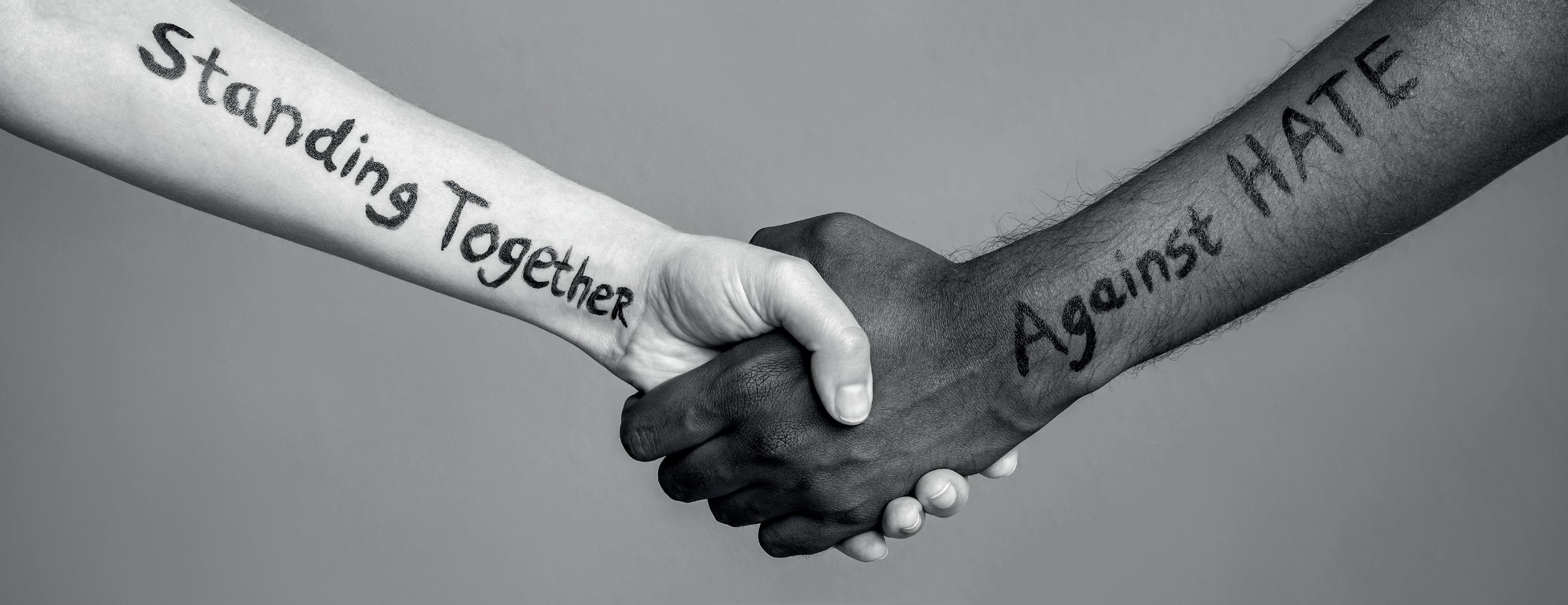
Structural racism is not something that a few people or institutions choose to practice. Instead it has been a feature of the complex social, economic, and political systems in which we all exist.
Establishing a welcoming and productive community that engages all of its diversity in the service to an organization, for both internal and external stakeholders. It requires affirmation and respect for cultural, social, racial, religious, gender, and ability differences among the organization’s stakeholders. It includes organizational improvements in access/success, climate/culture, education/training, infrastructure/ accountability, and community engagement. The Inclusive Excellence Framework is intended to be flexible enough to be “localized” within every state-supported institution, yet robust enough to retain the basic principles to foster collective impact.
The implementation of ONE Virginia is a critical dimension of the Commonwealth of Virginia’s pursuit of inclusive excellence and preeminence in state government employment. It reflects the critical nature of having the needs of our community and stakeholders represented in the workforce and among senior leaders. To become the “employer of choice,” the Commonwealth of Virginia (COVA) must be able to operationalize inclusive excellence and respond with a DE&I approach that is proactive, relevant, and progressive. Diversity goes beyond meeting government mandates and legal compliance; it is about recognizing that an organizational culture of empowerment and inclusion has a positive impact and return on investment with regard to performance, outcomes, and learning. Moreover, our state government must reflect our constituents to best serve the Commonwealth.

For the Commonwealth of Virginia to be successful, each agency must have leaders who are committed to a workforce that represents the Commonwealth’s diversity and ensures that all members of the workforce have equitable opportunities and feel included. It will be critical for leaders to formally assess their own biases and personal experiences in order to be able to listen, learn, and lead employees in these important efforts. They must be willing to exhibit exemplary leadership behaviors and implement the processes necessary for attaining both short- and long-term DE&I goals.
An environment that encourages and provides ongoing learning opportunities that are designed to meet the needs of all employees will be important. There must also be formalized mechanisms of assessment so that leaders are held accountable for increasing and supporting diversity and making an inclusive environment an agency priority.
Successful equity reform will involve ongoing experimentation, assessment, and innovation, some of which will challenge historical policies and practices that have been barriers to achieving inclusive excellence.
DE&I Ambassadors, such as the agency head, the agency-level diversity officer, and/or members of the agency diversity council will serve a leading role in promoting and fostering an organizational culture that values and supports DE&I. But this work is everyone’s work. Applying DE&I considerations to every policy and practice advanced in agency headquarters and in the field requires the collaborative effort of every employee throughout the state agency and Commonwealth community. The role of the leadership is to stabilize the diverse environment so as to operationalize the ONE Virginia Plan mission for inclusive excellence with both the Commonwealth’s workforce and our external customers.
Diversity is necessary to make any agency (and Commonwealth overall) competitive by creating an environment that supports differences in opinions, ideas, and skill sets, and that also promotes the creativity and innovation, to propel the agency and the Commonwealth toward excellence.
As we strive to become the “employer of choice,” we must foster a workforce that values diversity, respects individuality, and creates and sustains an environment that supports experimentation and change.
The Governor’s Office of Diversity, Equity, and Inclusion seeks to develop Virginia into an inclusive state where all people can live, learn, work, play, and thrive. Further, we seek a high-performing workforce that leverages diversity as a strength and strives for visible equity to empower all employees to deliver public service with inclusive excellence and cultural affirmation.

To increase organizational effectiveness and become an employer-of-choice by increasing diversity at all levels of leadership, fostering an inclusive and welcoming organizational culture, generating knowledge about diversity-led innovation, establishing a shared accountability for visible equity, and fostering genuine community engagement.


To facilitate the Steps Toward Inclusive Excellence, online resources in the form of a toolkit will be made available. In collaboration with ODEI and the Secretary of Administration, every leader is expected to fully leverage all of the online resources.

The contents of the online toolkit are adaptable and can be individualized for the needs of each agency. The online toolkit includes the resources listed below.
PowerPoint presentations describing
Principles of Community
Goal Worksheet
Virginia Plan

To begin to institutionalize DE&I, we, as a Commonwealth, must first know where we are and where we want to be. The tool we have adopted to aid us in this assessment is The Continuum of Inclusive and Equitable Organizational Development, which is presented on the following page. The Governor’s Office of Diversity, Equity, and Inclusion has set a broad goal to reach Stage 4 on the Continuum over the next five years.

Inclusive organizations seek and maintain diversity, equity, and inclusion; they regularly assess their organizational culture to ensure they employ diverse, equitable, and inclusive practices at all levels. Therefore, before we begin any work to implement an agency plan, the agency must evaluate — qualitatively and quantitatively — its practices, policies, and culture. The Continuum of Inclusive and Equitable Organizational Development provides an illustration for organizational development that ranges from “monocultural” to “inclusive and equitable.” This continuum will serve as our means of evaluating each agency and tracking its organizational growth and progress.

Openly maintains dominant group’s power
Deliberately restricts membership
Designed to maintain one group’s dominance over others
Overt discrimination and harassment go unaddressed
Unsafe and dangerous environment for minoritized individuals
Maintains privilege of historically powerful group(s)
Dominant culture‘s norms, policies, services, and procedures are seen as the only or “right” way
Limited number of token members from other identity groups are allowed in IF they have the right credentials, attitudes, and behaviors
Engage with DE&I issues only on dominant group members’ terms
Committed to removing some bias
Provides some access to members of previously excluded groups
No change in organizational culture, mission, or structure
Committed to removing historically biased practices and barriers
Actively recruits, retains, and develops members of groups that have been historically denied access and opportunity
Moving beyond nondiscriminating and firstlevel awareness
Developing a climate that values and leverages diversity
Mission, values, operations, and services reflect the contributions and interests of a broad diversity of cultural and social identity groups
Minoritized members are responsible for “not making waves,” offending/ challenging dominant group members
Efforts to change the profile of the workforce
Employees are encouraged to be culturally aware and responsive
Employees must assimilate to organizational culture
Beginning to question the limitations of organizational culture, mission, policies, structures, operations, services, and management practices
◗ Leaders and the workforce act on organizational commitment to eradicate all forms of bias and inequity within the organization
Members across all identity groups are full participants in decision-making
“Token placements” must be team players and not raise issues related to organizational culture around sex, genderidentity, race/ethnicity, ability, class, or sexuality
Committed to redesigning and implementing policies and practices to redistribute power, and ensure inclusion, participation, and empowerment of all members
Actively works in larger communities to eliminate opportunity gaps and create inclusive excellence

The ONE Virginia Plan leverages the model of Inclusive Excellence, adapted from the Association of American Colleges and Universities, to move agencies to Stage 4 and toward Stage 6 of the Continuum of Inclusive and Equitable Organizational Development shown on the previous page. During this journey, agencies will work to foster a sustainable and transformative culture that addresses subtle, overt, interpersonal, and formal discrimination.
The ONE Virginia Model of Inclusive Excellence is comprised of distinct dimensions, as depicted graphically and described in detail below. As a model, Inclusive Excellence is designed to help organizations integrate diversity and quality efforts. The Model is the foundation of the ONE Virginia Plan, as the Plan’s strategic goals and objectives for agencies and organizations are based in each of these dimensions, and are intended to incorporate diversity into the core of organizational functioning. Applying Inclusive Excellence concepts leads to an infusion of DE&I into an organization’s recruiting and hiring practices, its training, and its day-to-day structures and practices. Inclusive Excellence means an organization adopts cohesive, coherent, and collaborative integration of DE&I into the organizational pursuit of excellence.
The ONE Virginia Model of Inclusive Excellence is flexible and scalable and encourages state agencies to engage in intentional and systematic reflection and planning across all areas of agency functioning. The five dimensions which comprise the model are as follows:
Access and Success: The compositional diversity of an agency’s workforce and constituency groups (i.e., leadership, staff, industry and nonprofit partners, visitors, service populations) and the context-specific outcomes gained from their relationships with the agency.
Climate and Intergroup Relations: The experience of being connected to the agency, specifically the behavioral experiences and expectations. Constituent perceptions related to feeling respected, a sense of belonging, and affirming empowering relationships with agency representatives are key features of this dimension.
Education and Training: Professional development and training within state government that formalize constituent engagement and an equity lens throughout daily operations. Includes intentionally designed learning programs and professional development opportunities that promote intercultural awareness and skill, as well as equipping agency members with an equity toolkit.
Infrastructure and Accountability: The sustainability and accountability for policies, resource-allocation mechanisms, organizational structures/relationships, cultural norms/traditions, communication structures, and accountability/transparency mechanisms. Includes performance measures that inform and enable an intentionally inclusive and equitable state government.
Community Engagement: The development of new or the redesign of existing external partnerships to create collective impact around the opportunity gaps in the broader community. Genuine community engagement in state government refers to the ways agencies serve diverse Virginia communities.

The goals below, and the objectives, strategies, and indicators detailed in the next several pages, guide the actions of appropriate organizational units, including senior management, in the delivery of goods, services, policies, and practices that advance DE&I. In implementing the ONE Virginia Plan, we will use the indicators for each of the dimensions of Inclusive Excellence to create an annual report to Department Directors and the CDO for the Commonwealth of Virginia. The report will include accomplishments, barriers, and plans for continued improvement.
Access and Success: Recruit and retain a diverse workforce.
Climate and Intergroup Relations: Create and sustain an agency culture that affirms and respects diversity and employs inclusive practices throughout daily operations.
Training and Education: Engage in learning the concepts of DE&I, and the importance of these concepts in completing the agency mission.
Infrastructure and Accountability: Create and sustain an agency or departmental infrastructure that effectively supports progress and accountability in achieving diversity goals.
Community Engagement: Focus community engagement activities on those that provide measurable, direct, equitable, and sustained benefit to all of Virginia’s diverse communities.

Access refers to the activities an agency or department uses to recruit and hire individuals from a broad range of human experience and ability. Success refers to the investments made in the development of employees and leadership/supervisors. These efforts increase or maintain diversity among an agency or department’s employees and leadership to bring needed perspectives to its operations, and increase creativity and productivity.
This dimension also refers to the access and success of the service populations of the 100+ state agencies. Access for service populations includes how an agency or department communicates available services and programs, intake processes, service delivery models, and practices. Success refers to the outcomes for service populations related to the mission of the agency or department.
Recruit and hire a diverse workforce at every level of leadership
1. Implement a comprehensive outreach, recruitment, and assessment plan focusing on hiring standards and practices, such as advertising, the creation of job descriptions, search processes, and education of search committee/hiring managers, and the creation of a diversity advocate role that is eventually extended to all (All of those involved in the hiring process should undergo mandatory anti-bias training)
2. Implement intentional outreach and recruitment strategies to increase applicants and hires from historically underrepresented populations
3. Integrate applicant flow analyses of recruitment and selection processes into automated platforms (e.g., Cardinal), and report on results biannually at a minimum
4. Use data to identify gaps in representation and create new community partnerships to increase representation from those groups
5. Report data to staff to promote a culture of transparency and regularly solicit feedback
and promote a more
diverse workforce

Access and Success: Recruit and retain a diverse workforce.

To nurture the diversity of perspectives and experiences that lead to inclusive excellence, agencies and departments must create an environment that is culturally affirming, and which integrates differing viewpoints and lived experiences. State agencies will utilize different channels to communicate the Commonwealth’s message on DE&I to all agencies’ levels. Thus, the goal and subsequent objectives focus on building and sustaining an inclusive workplace environment and facilitating outstanding customer service and stakeholder relations by promoting accessibility, cultural competency, accountability, education, and communication. Furthermore, state agency leadership will need to model how alternative viewpoints are respected, valued, and encouraged.
Objective 1
Create and sustain a climate that is supportive, respectful, and that values and integrates differing perspectives and experiences
1. Provide access and resources for ASL and language differences for websites, documents, and in-person services
2. Create opportunities for facilitated dialogue between and among groups that increases understanding of varied perspectives and the nature of social and economic inequalities
Educate employees, interns, student pages, etc., on the importance of prevention and tactics to prevent harassment, discrimination, and identity-based violence
Educate employees, interns, and student pages on equity policies
Promote productive methods of conflict resolution
Effectively address concerns and complaints
Offer educational and celebratory events that recognize, value, and honor diversity and promote inclusion; evaluate different programs for their impact on the climate for and across many dimensions of diversity

Utilize organizational climate employee engagement factors/trends to assess an agency’s working environment, identify barriers to maximum engagement, and develop targeted actions
Normalize and encourage flexible work policies and programs such as telework, wellness programs, tuition assistance/forgiveness, community service leave, and professional development to support employees’ and agencies’ growth and productivity at all levels
10. Develop a system that recognizes leadership in DE&I
Establish Employee Affinity and Resource Networks (EARNs) for underrepresented groups, to promote DE&I within the workforce and engage with community partners; define the functions of EARNs, then formalize through a charter, formulate and execute an action plan to establish and enrich strategic relationships both internally and externally to enhance inclusion, partnership, service to, and recruitment of underrepresented populations
Intentionally build diverse teams and partnerships that foster DE&I practices
Add DE&I elements to onboarding programs and materials, marketing materials, website, wall coverings, and agency decorations/bulletin boards, etc.
Demonstrate top-down commitment and involvement through the articulation of the DE&I strategy, including how DE&I enables the achievement of the agency’s vision, mission, and goals
Emphasize senior management’s commitment to DE&I by conveying the business need for DE&I in messaging, promotion, and behaviors reflective of the ONE Virginia brand and mission

Remove barriers for employees with disabilities by conducting regular accessibility audits by an objective third-party expert to ensure all employees are accommodated in the workplace; provide employees the necessary accommodations to be successful in the agency
Create opportunities for cross-collaboration and rotational assignments among employees to enrich the employee climate, foster diversity of thought, and inspire innovative solutions
by race/ethnicity, gender, ability, religion, and LGBTQ+ status demographics where possible)
to be collected by HR representatives and/or an objective third party in anonymous survey format.
aggregated data will be shared with all staff as often as it is collected.
understanding of agency and departmental resources related to harassment, discrimination, and identity-based
GOAL 2 continued Climate and Intergroup Relations: Create and sustain an agency culture that affirms and respects diversity and employs inclusive practices throughout daily operations.
Training and Education: Engage in learning the concepts of DE&I, and the importance of these concepts in completing the agency mission.
and education help employees and leaders develop awareness about diversity and skills to facilitate intergroup relations. State agencies will leverage workforce diversity and empower diverse perspectives (cognitive and neurodiverse) throughout the organization with relevant employee training, diversity scholarship, learning, and professional development. Therefore, agency leaders must provide the learning tools to employees at all levels to enhance their effectiveness.
Conduct a training needs assessment to determine gaps (e.g., competency, legislative, resource, etc.) and create an ongoing training plan
Establish agency and departmental learning goals and training plans based on gap assessment
Integrate DE&I knowledge and awareness into performance appraisals for all employees
Offer educational opportunities that enable employees and leaders to achieve DE&I learning goals based on competency gap assessment
Build opportunities for employees to learn about the organization’s inclusive excellence framework, including its nondiscrimination policies, equity resolution processes, and resources for support
Assess feasibility of providing learning in a mode other than “in-person”
Identify and remedy barriers that impede employee professional development
Promote a diversity of subject matter experts, technical experts, and trainers for professional development

(Disaggregated by race/ethnicity, gender, ability, religion, and LGBTQ+ status demographics where possible)
Data to be collected by HR representatives and/ or an objective third party in anonymous survey format. Anonymized, aggregated data will be shared with all staff as often as it is collected.
Movement toward agency or departmental learning goals
Employee perception of increased knowledge related to DE&I
Number and type of educational offerings
Participation rates in different types of educational offerings
Employee satisfaction with quality and quantity of educational opportunities
Increased sense of belonging
and Accountability: Create and sustain an agency or departmental infrastructure that effectively supports progress and accountability in achieving diversity goals.
and departments
and
that supports and fully integrates its goals. This
processes
needed. Therefore, to
to full inclusion by
DE&I in policies and practices, and equip leaders with the ability to manage diversity and be accountable for the results.
Sustain and increase agency or departmental efforts designed to amplify opportunities to advance the goals outlined in this framework
1. Incorporate DE&I interests into strategic planning and reporting efforts
2. Create agency/departmental/unit DE&I councils; establish a tiered DE&I council at each agency that bears the responsibility to report DE&I performance to ODEI
3. Design processes to openly share resources and best practices across agencies and units, such as openly and transparently sharing opportunities for diverse employee engagement on agency internships, externships, advisory boards, commissions, or other volunteer service
Conduct barrier analysis and develop action plans to eliminate any identified barrier(s) to EEO
Strengthen collaboration between selecting officials and Human Resource professionals by clarifying roles and responsibilities
Create mandatory training for selecting officials on conducting legal interviews, lawful and equitable hiring, and the impact of unconscious bias in the recruitment and selection process
(Disaggregated by race/ethnicity, gender, ability, religion, and LGBTQ+ status demographics where possible)

Data to be collected by HR representatives and/ or an objective third party in anonymous survey format. Anonymized, aggregated data will be shared with all staff as often as it is collected.
Evidence Inclusive Excellence has been integrated into strategic planning
Evidence of increased cross-agency collaboration and sharing
Documentation of processes used to evaluate DE&I efforts (such as creating a search advocate checklist)
Documentation of process redesign
Evidence of agency sponsored legislation that advances DE&I or confronts barriers to inclusive excellence
Institute systems of assessment, reporting, and accountability and continuous improvement to optimize the realization of the agency or department’s goals
Establish a CDO role that reports directly to the agency head and leads a diversity council at the agency; establish a process to create a diversity council at the agency that represents employees at all levels of leadership at the central office and department level
Develop regular reporting processes on progress toward statewide DE&I goals (including but not limited to: women and minority small business procurement, increase of employees with disabilities, graduation or completion rates of diverse students, equitable transition to clean energy, and environmental justice considerations)

Engage key leaders and stakeholders in analyzing disaggregated data and special studies to better understand and address longstanding organizational challenges related to DE&I
Schedule regular and ongoing meetings with key leaders and relevant agency or departmental committees to review data and
Measure constructs related to DE&I to describe
and assess internal policies and procedures throughout the agency or department to identify
to further
to
hostility,
Create structures and processes of accountability for organizational leadership and effectiveness
GOAL 4 continued Infrastructure and Accountability: Create and sustain an agency or departmental infrastructure that effectively supports progress and accountability in achieving diversity goals.
diversity officers as an integral participant in all strategy, communications and messaging, budget, and executive meetings

Ensure agency leadership accountability for achieving specific measurable, actionable, and timely DE&I objectives
Create a structured process for recruitment of appointed positions and other positions that lack transparency or a structured process
Identify barriers to EEO protective factors (race, ethnicity, color, religion, national origin, gender, sex, sexual orientation, gender identity, age, disability status, and veteran status) in hiring, promotions, separations, and career development and by grade levels and major occupations annually in accordance with Governor’s Executive Order, §2.2-1201 of the Code of Virginia, DHRM Policy 2.05 Equal Employment Opportunity, and Title VII of the Civil Rights Act of 1964
by race/ethnicity, gender, ability, religion, and LGBTQ+ status demographics where possible)
GOAL 4 continued Infrastructure and Accountability: Create and sustain an agency or departmental infrastructure that effectively supports progress and accountability in achieving diversity goals.
Community Engagement: Focus community engagement activities on those that provide measurable, direct, equitable, and sustained benefit to all of Virginia’s diverse communities.

Government organizations deepen Inclusive Excellence internally when they engage the community as anchors of equity.
Improve outcomes and experiences for populations the agency or department serves directly
1. Identify communities that your agency and departments serve and its relationships with them through an equity lens
2. Develop new processes and strategies of engagement to improve the experiences and outcomes of the communities the agency or department serves, such as using census track data, faith leaders, and advocacy leaders to connect with residents or customers (or possible future customers) of the agency
3. Ensure equitable access for diverse needs including but not limited to language access, digital access, and access for individuals with disabilities
(Disaggregated by race/ethnicity, gender, ability, religion, and LGBTQ+ status demographics where possible)
1. Number and type of philanthropic initiatives or partnerships implemented, such as creating robust partnerships with Historically Black Colleges and Universities (HBCUs)
2. Demonstrated impact on the communities directly served by the agency or department
Community Engagement: Focus community engagement activities on those that provide measurable, direct, equitable, and sustained benefit to all of Virginia’s diverse communities.

Improve outcomes and experiences for underrepresented groups in the agency or department’s larger community
1. Identify the underserved communities the agency or department can serve through outreach, philanthropy, and community partnerships
2. Implement programs and develop partnerships that help close the opportunity gaps in the communities in which the agency or department works
3. Create a formal communication feedback mechanism to get input from underrepresented groups, advocates, nonprofit organizations, sister agencies, etc.
4. Develop and implement talent management programs, such as mentorship, succession planning, and coaching programs internally and externally with professional organizations and institutions of higher education to maximize performance and career potential for underrepresented groups within the agency
5. Leverage the Governor’s Affinity Advisory Boards to seek engagement and expertise with special projects, hiring panels, and outreach
(Disaggregated by race/ethnicity, gender, ability, religion, and LGBTQ+ status demographics where possible)
1. Number and type of initiatives or partnerships implemented
2. Demonstrated impact of initiatives and partnerships, evaluated through the five conditions of collective impact
To enhance equitable opportunities for the workforce and the residents served, the Commonwealth must achieve inclusive excellence in state government, business re-engineering, and operational and programmatic logistics across all state agencies. Integrating and being accountable to a DE&I agenda within the strategic plan of an organization will solidify that achievement.
The ONE Virginia Plan for state government will be successful only if everyone assumes responsibility and a role in our collective impact. Thus, if we embrace the ONE Virginia mission to increase diversity at all levels, foster an inclusive and welcoming organizational culture, generate organizational-wide knowledge about diversity-led innovation, establish a shared accountability for visible equity, and foster genuine community engagement, then we will become a state where all people can live, learn, work, play, and thrive.
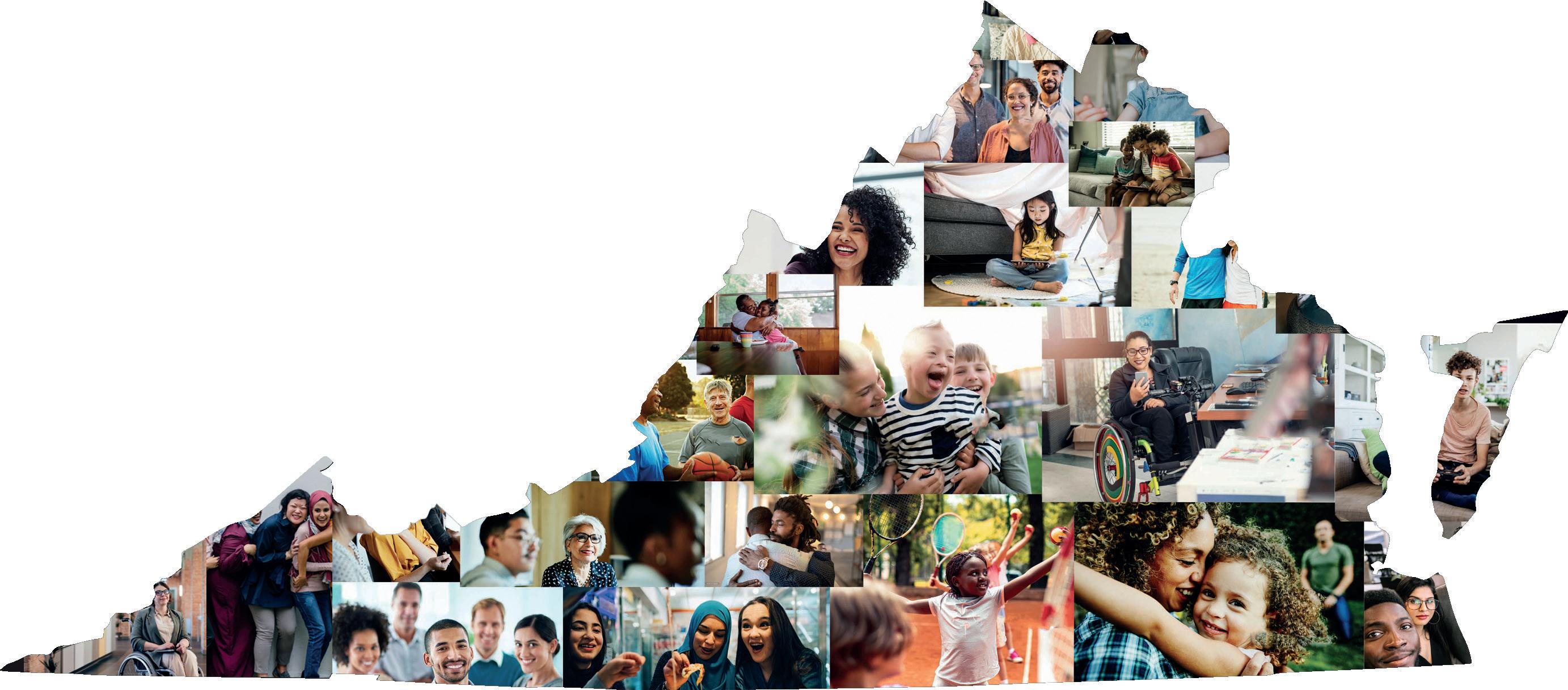

Assisi, Francis C. “Indian Slaves in Colonial America: Best Indian American Magazine: San Jose CA: India Currents,” October 4, 2016. https://indiacurrents.com/indian-slaves-in-colonial-america/
Cheeseman Day, Jennifer. Rep. Population Projections of the United States by Age, Sex, Race, and Hispanic Origin: 1995 to 2050. U.S Bureau of the Census, 1996.
“Definitions.” Healthy Equity. Virginia Department of Health, 2021. https://www.vdh.virginia.gov/health-equity/ definitions/
Fiske, Warren. “The Black-and-White World of Walter Ashby Plecker: How an Obscure Bureaucrat Tried to Eradicate Virginia’s ‘Third Race.’” pilotonline.com, August 18, 2004. https://www.pilotonline.com/history/ article_654a811f-213f-5d97-a469-51cc43b1a77f.html
Frey, William H. “The Nation Is Diversifying Even Faster than Predicted, According to New Census Data.” Brookings. Brookings, July 16, 2020. https://www.brookings.edu/research/new-census-data-shows-the-nation-isdiversifying-even-faster-than-predicted/
Headrights (VA-NOTES). Library of Virginia, 2021. https://www.lva.virginia.gov/public/guides/va4_headrights.htm

Institute Staff. “11 Terms You Should Know to Better Understand Structural Racism.” The Aspen Institute, July 11, 2016. https://www.aspeninstitute.org/blog-posts/structural-racism-definition/
Jee-Lyn García, Jennifer, and Mienah Zulfacar Sharif. “Black Lives Matter: A Commentary on Racism and Public Health.” American journal of public health. American Public Health Association, August 2015. https://www. ncbi.nlm.nih.gov/pmc/articles/PMC4504294/
Jones, Camara Phyllis. “Confronting Institutionalized Racism.” Confronting Institutionalized Racism on JSTOR. Clark Atlanta University. Accessed February 9, 2021. https://doi.org/10.2307/4149999
Parks, T. “How Racism, Segregation Drive Health Disparities,” December 15, 2016. https://www.ama-assn.org/ delivering-care/patient-support-advocacy/how-racism-segregation-drive-health-disparities
“Racism and Health.” AMERICAN PUBLIC HEALTH ASSOCIATION. Accessed February 9, 2021. https://www.apha.org/ topics-and-issues/health-equity/racism-and-health
Sherman, R.B. “‘The Last Stand’: The Fight for Racial Integrity in Virginia in the 1920s.” The Journal of Southern History 54, no. 1 (1988): 70–72.
State Population By Race, Ethnicity Data. U.S. Census Bureau, 2017. https://www.governing.com/archive/stateminority-population-data-estimates.html
Steinmetz, Katy. 2020. “She Coined the Term ‘Intersectionality’ over 30 Years Ago. Here’s What It Means to Her Today.” Time. February 20, 2020. https://time.com/5786710/kimberle-crenshaw-intersectionality/
“Theory and Practice of Multicultural Organizational Development.” Essay. In The NTL Handbook of Organization Development and Change: Principles, Practices, and Perspectives, 2nd ed., 175–92. Pfeiffer, 2014.
Virginia Racial Integrity Act of 1924. The Virginia Center for Digital History, 2021. http://www2.vcdh.virginia.edu/ lewisandclark/students/projects/monacans/Contemporary_Monacans/racial.html.
Williams, D. A., Berger, J. B., & McClendon, S. A. Rep. Toward a Model of Inclusive Excellence and Change in Postsecondary Institutions. Association of American Colleges and Universities, 2005

The following table provides an example of how to adapt the language of the ONE Virginia Plan for different agencies and organizations across the Commonwealth‘s public and private sectors.
Recruit, retain, and promote a more diverse workforce and leadership
GOAL 1
Recruit, retain, and promote a more diverse workforce and leadership
Recruit, retain, and promote a more diverse workforce and leadership
1. Recruit, retain, and promote a more diverse faculty and staff
2. Recruit a more diverse undergraduate, graduate, and professional student body
1. Recruit, retain, and promote a more diverse workforce and leadership
2. Eliminate opportunity gaps for students at all levels
GOAL 2
Create an agency/ department climate that promotes a strong sense of belonging for all members and constituents
Create an agency/ department climate that promotes a strong sense of belonging for all members and constituents
Create a company/ organizational climate that promotes a strong sense of belonging for all members and constituents
3. Eliminate opportunity gaps
Create an institutional climate that promotes a strong sense of belonging for all faculty, staff, and students
Create a district-wide climate that promotes a strong sense of belonging for all families, students, staff, and administrators
Engage staff and administrators in developing cross-cultural competencies and varied perspectives of DE&I
Engage staff and administrators in developing cross-cultural competencies and varied perspectives of DE&I
Engage all staff, leadership, and board members in developing cross-cultural competencies and varied perspectives of DE&I
1. Engage all faculty, staff, and students in developing crosscultural competencies
Implement diverse and inclusive curricular/cocurricular experiences
Support research that examines and provides solutions to opportunity gaps in our society
1. Engage all staff and administrators in developing cross-cultural competencies and varied perspectives of DE&I
2. Implement diverse, inclusive, and rigorous learning experiences for all students
Build an agency/department infrastructure that establishes accountability, investment, and continuous improvement around the agency/ department’s DE&I goals
Build an agency/department infrastructure that establishes accountability, investment, and continuous improvement around the agency/department’s DE&I goals
Build organizational infrastructure that establishes accountability, investment, and continuous improvement around the company/organization’s DE&I goals
Build an institutional infrastructure that establishes accountability, investment, and continuous improvement around the college or university’s DE&I goals
Build a district-wide infrastructure that establishes accountability, investment, and continuous improvement around the school district’s DE&I goals
Develop new and redesign existing external partnerships to create collective impact around opportunity gaps related to the agency/ department’s mission
Develop new and redesign existing external partnerships to create collective impact around opportunity gaps related to the agency/ department’s mission
Develop new and redesign existing external partnerships to create collective impact around opportunity gaps related to the company/ organization’s mission
Develop new and redesign existing external partnerships for the college or university to serve as an anchor institution in its community
Develop new and redesign existing external partnerships to create collective impact around the opportunity gaps in the larger community
Create Inclusive Excellence work group
Identify opportunity gaps Self-study Engage stakeholders

Share results organization-wide
Draft Inclusive Excellence plan
Establish robust reporting and improvement processes
Commonwealth of Virginia
